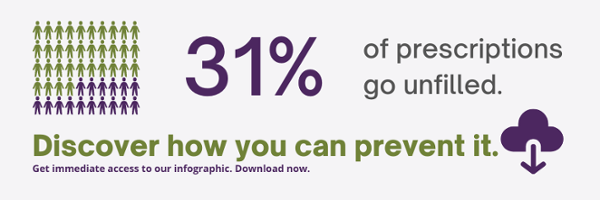Allergy symptoms don’t always stop at sneezing or watery eyes. For many, the immune system is working overtime — leading not only to seasonal discomfort but also to more complex conditions like allergic asthma and Mast Cell Activation Syndrome (MCAS).
These conditions involve a deeper inflammatory response that can disrupt everyday life, with symptoms like wheezing, chronic coughing, or skin flare-ups that seem to appear without warning.
MCAS, a condition in which mast cells release mediators inappropriately, is estimated to affect as many as 17% of the population — and it’s often underdiagnosed.
Source: Journal of Personalized Medicine
Up to 90% of children and 50% of adults with asthma also have allergic triggers fueling airway inflammation.
Source: Medline
While over-the-counter antihistamines may help relieve mild symptoms, they often fall short for patients dealing with persistent or systemic immune responses. One option increasingly recommended by prescribers is Ketotifen, a unique antihistamine with potential benefits: it may not only relieve allergy symptoms but also functions as a mast cell stabilizer, making it potentially useful for both allergic asthma and MCAS.
Unlike traditional antihistamines, Ketotifen may reduce the frequency and severity of allergic reactions and asthma flares by helping to prevent mast cells from releasing histamine and other inflammatory mediators. For patients with severe allergies, allergy-related asthma or MCAS, Ketotifen offers a proactive way to support immune regulation and respiratory health — not just address symptoms once they appear.
What Is Ketotifen and Why Is It Used?
Ketotifen is a medication considered by many prescribers for people dealing with ongoing allergies, asthma or MCAS.
“Ketotifen is defined as an antiallergic drug that inhibits the release of vasoactive substances from mast cells, stabilizes mast cells, and exhibits antihistaminic effects, making it effective for conditions like asthma and atopic dermatitis.”
How Ketotifen Works in the BodyEmpty heading
In research, Ketotifen’s influence goes beyond the common culprit histamine. Ketotifen is one of the few medications that may offer both immediate symptom relief (antihistamine) and long-term control (mast cell stabilization) —making it desirable, especially for patients with:
- Chronic allergic conditions
- Mast Cell Activation Syndrome (MCAS)
- Complex hypersensitivity reactions
- Inflammatory allergic disorders not responding to standard therapies
Let’s dig deeper into histamine and mast cells for better understanding.
Ketotifen mechanism of action includesEmpty heading
Histamine receptor activity: It blocks H1 receptors, which histamine binds to when causing symptoms like itching, sneezing, and swelling.
Mast cell involvement: It interacts with mast cells, which are involved in releasing histamine and other allergy-related substances.
What Does Histamine Do in the Body?
Histamine is a natural chemical made by your immune system. It’s stored in mast cells and basophils, and is released in response to triggers such as allergens, infections, injury, or even some medications.
Here’s how histamine functions:
Immune Defense (Especially Allergic Response)
Histamine plays a central role in allergic reactions. When the immune system detects a threat (like pollen, dust mites, or pet dander), it triggers histamine release to help fight it off.
This leads to:
- Sneezing, runny nose, watery eyes (due to vasodilation and increased capillary permeability)
- Itching and hives (from stimulation of nerve endings and skin cells)
- Bronchoconstriction (tightening of airways, sometimes contributing to asthma symptoms)
What Do Antihistamines Do?
Antihistamines are medications designed to block the effects of histamine by binding to histamine receptors.
H1 Blockers (Allergy Antihistamines) Like KetotifenEmpty heading
These block H1 receptors, and are commonly used to address allergic symptoms like:
- Sneezing
- Itchy eyes/nose/throat
- Hives
- Anaphylaxis (as part of emergency care)
What Are Mast Cells?
Mast cells are found throughout the body, particularly in areas like the skin, lungs, gastrointestinal tract, and around blood vessels. They play an important role in the immune system, especially in response to allergens, infections, or injury. When triggered, mast cells “degranulate” — releasing inflammatory substances into surrounding tissue.
In some individuals, these cells can become overactive or overly sensitive, leading to chronic allergic symptoms, inflammatory conditions, or Mast Cell Activation Syndrome (MCAS).
What Is a Mast Cell Stabilizer?
A mast cell stabilizer, such as Ketotifen, is a type of medication that helps prevent mast cells from releasing chemicals that trigger allergic and inflammatory reactions. These chemicals include histamine, leukotrienes, cytokines, and other substances that cause symptoms such as itching, swelling, redness, wheezing, and more.
How Mast Cell Stabilizers Like Ketotifen May HelpEmpty heading
Unlike traditional antihistamines, which block the effects of histamine after it is released, mast cell stabilizers help prevent the release of histamine and other chemicals in the first place.
This may:
- Reduce the frequency and severity of allergic flare-ups
- Lower baseline inflammation in conditions involving mast cell dysregulation
- Help control symptoms that aren’t well-managed by antihistamines alone
What Research Says About Ketotifen
Several studies have explored Ketotifen’s role in asthma, allergic conditions, and Mast Cell Activation Syndrome (MCAS).
Mast Cell Activation Syndrome (MCAS)
A randomized controlled trial included in this systematic review demonstrated that oral ketotifen (2 mg twice daily) led to a statistically significant reduction in pruritus and whealing in adults with primary MCAS (urticaria pigmentosa). This supports ketotifen’s role as a mast cell-stabilizing H1-antihistamine that may improve mediator-driven symptoms in MCAS. These findings reinforce its off-label use in MCAS when standard therapies are insufficient.

Asthma in Children 5 to 15 Years of AgeEmpty heading
A study involving children aged 5 to 15 years with asthma observed that those receiving Ketotifen along with standard care experienced fewer wheezing episodes and emergency room visits.
Bronchial Asthma and Allergic DisordersEmpty heading
In a review of Ketotifen, people who used it for several weeks were reported to have fewer breathing troubles and needed less extra asthma medication. It also mentioned observed changes in allergy-related conditions such as rhinitis, conjunctivitis, and urticaria.
Hives and Flare-upsEmpty heading
For those who deal with recurring hives, some research has explored how Ketotifen might relate to flare-type skin reactions, including those caused by heat, cold, or physical pressure. Researchers noted its possible connection to the body’s allergic response pathways.
Atopic DermatitisEmpty heading
In a double-blind study, half of 56 adult patients with atopic dermatitis were systemically given ketotifen capsules 1 mg two times daily for 3 months, while the other half was given placebo. The patients in the ketotifen group improved significantly during the administration by all the clinical assessments.
Why Choose Compounded Ketotifen from Healing Dose

Ketotifen is compounded by HDRx into several forms: Eye drops, ear drops, nasal, topical cream or gel, vaginal, and most commonly capsules.
Compounded Ketotifen from Healing Dose, a nationally accredited compounding pharmacy, offers more customizable options for addressing allergies and Mast Cell Activation Syndrome (MCAS) throughout the body. Compounding pharmacists work with precision based on the doctor’s prescription for each patient.
Potential Advantages of Compounded KetotifenEmpty heading
- Personalized dosage strength – Each medication can contain the precise amount of Ketotifen that fits a prescriber’s plan.
- Simplified administration – Compatible medications can be combined into a single medication for convenience and to support adherence.
- Additive-free formulations – Ketotifen is prepared as instructed without dyes, sugar, lactose, alcohol, or other unnecessary additives.
- Special dietary options – Vegan and gluten-free capsule bases are available for patients with dietary or sensitivity concerns.
- Access to unavailable forms – Compounding makes it possible to provide Ketotifen in strengths or combinations not sold commercially.
At HDRx, our pharmacists receive advanced training to ensure quality and consistency.
Your Trusted Source for Compounded Ketotifen in Michigan
At HDRx, quality isn’t just promised — it’s proven in our adherence to high standards of quality. We hold PCAB accreditation through ACHC for both sterile and non-sterile compounding, among the first in the country to earn it back in 2006.

Fun fact: Only 1% of compounding pharmacies hold PCAB certification for both sterile and non-sterile compounding
We serve patients and healthcare providers and ship prescriptions not only throughout Michigan, but across Ohio, Indiana, Illinois, Wisconsin, Minnesota, and Florida.
Within Michigan, we work with patients and top practitioners in:
- Oakland County
- Wayne County
- Macomb County
- Genesee County
- Livingston County
- Kent County
- Eaton County
- Grand Traverse County
For patients, contact our pharmacists to learn more about Ketotifen and other compounded medications available through HDRx. For prescribers, reach out to our team to request an order form or discuss patient-specific compounding options. Let us know your challenging cases, and we can provide recommendations.
References
- Most recent National Asthma Data | CDC. (n.d.). Link
- What is Chronic Urticaria? (2023, January 1). Allergy & Asthma Network. Link
- Causes and Triggers | NHLBI, NIH. (2024, April 17). NHLBI, NIH. Link
- Hoss, E. & Mayo Clinic. (2025, April 1). Hives. Penn Medicine. Link
- Sokol, K. C., Amar, N. K., Starkey, J., & Grant, J. A. (2013). Ketotifen in the management of chronic urticaria: resurrection of an old drug. Annals of Allergy Asthma & Immunology, 111(6), 433–436. Link
- Ketotifen. (2006). In Elsevier eBooks (pp. 1980–1981). Link
- Grant, S. M., Goa, K. L., Fitton, A., & Sorkin, E. M. (1990b). Ketotifen. Drugs, 40(3), 412–448. Link
- Klooker, T. K., Braak, B., Koopman, K. E., Welting, O., Wouters, M. M., Van Der Heide, S., Schemann, M., Bischoff, S. C., Van Den Wijngaard, R. M., & Boeckxstaens, G. E. (2010). The mast cell stabiliser ketotifen decreases visceral hypersensitivity and improves intestinal symptoms in patients with irritable bowel syndrome. Gut, 59(9), 1213–1221. Link
- Kabra, S. K., Pandey, R. M., Singh, R., & Seth, V. (2000). Ketotifen for asthma in children aged 5 to 15 years: a randomized placebo-controlled trial. Annals of Allergy Asthma & Immunology, 85(1), 46–52. Link
- Grant, S. M., Goa, K. L., Fitton, A., & Sorkin, E. M. (1990c). Ketotifen. Drugs, 40(3), 412–448. Link
- Ketotifen in the treatment of atopic dermatitis. Results of a double blind study. (1993b, April 1). PubMed. Link
- Riccardi, V. M. (1987). Mast-Cell stabilization to decrease neurofibroma growth. Archives of Dermatology, 123(8), 1011. Link
- Valent, P. (2013). Mast cell activation syndromes: definition and classification. Allergy, 68(4), 417-424. Link



